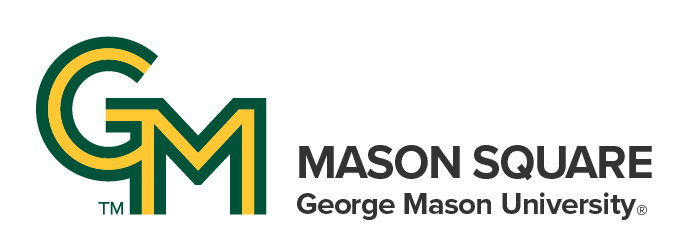In This Story
Mason Square is home to data analytics classes from several College of Engineering and Computing (CEC) departments. This makes it promising locale for George Mason University’s multidisciplinary Data Analytics Engineering Program. The Data Analytics Engineering master of science program is the second largest in CEC, with more than 700 students enrolled in classes across three Mason campuses. Currently, three sections of the capstone course DAEN 690 meet at Mason Square.
“Mason Square is a perfect place to hold courses, especially for individuals who are returning students or lifelong learning adults, who are government employees or contractors,” says interim program director Bernard Schmidt.
Starting with the Fall 2023 semester, Schmidt said the goal is to schedule as many sections of DAEN courses, including the capstone course, at Mason Square as is offered at the Fairfax Campus.
“This offers the greatest opportunity to not only maximize the utilization of Mason Square, but it also offers more course availability options as a way to encourage those returning students and lifelong learning adults located in Northern Virginia to apply to the DAEN program and enroll in DAEN program courses,” he says.
Students can earn an MS in Data Analytics Engineering or a certificate in Data Analytics. Both options require core classes in applied information technology, computer science, operations research, and statistics. The master’s further includes a capstone data analytics project and a concentration in a specialized technical area. Currently, students can choose from 13 different concentrations ranging from health data analytics to financial engineering.
Ken Comer, who teaches the core course OR 531 Analytics and Decision Analysis, says these students’ aim is to develop the types of tools that do the data analytic work for a client and consistently provide meaningful and useful results.
“The engineer designs. It's someone else who operates, so in order to get there, of course, the students have to learn the techniques that they're going to have [in order] to create as the engineer,” he says, citing the three techniques that can be embedded in a data analytic tool: optimization, simulation, and data analysis.
The study of data analytics is more than simply using data visualization tools, Comer says. He notes one problem with data science can be that the scientist gives the client copious insights into the client’s data, but the client may not actually feel helped in deciding.
“[Students] get a lot of tools in how to curate data, how to manipulate it, store it, move it around, secure it, and a variety of other things,” says Comer, “But this is the only class where they get to … learn how to create a useful product out of the data—something that would help somebody, that is important for somebody who has to make a decision.”
In his syllabus, Comer explains, “Every problem we will work will be focused on the allocation of resources or some other important decision that might be experienced in the course of business, industry, or government operations. Some examples are: If I’m offered additional resources, how much should I pay for them? What is the mix of production decisions that maximizes profit? What sequence should I use for a multi-step process? How much should I save to ensure an 80% chance of having a set sum at retirement?”
He further writes, “In order to receive proper credit, you will need to answer the question at hand. Your boss or your customer cannot be expected to search around your spreadsheet for the numerical answer.”
James Baldo, the program director currently on sabbatical, says he is excited that working students at Mason Square might be able to apply their newly acquired skills immediately in the workplace. “It's going to be a hub of industry partnerships down there with the university,” he predicts.
